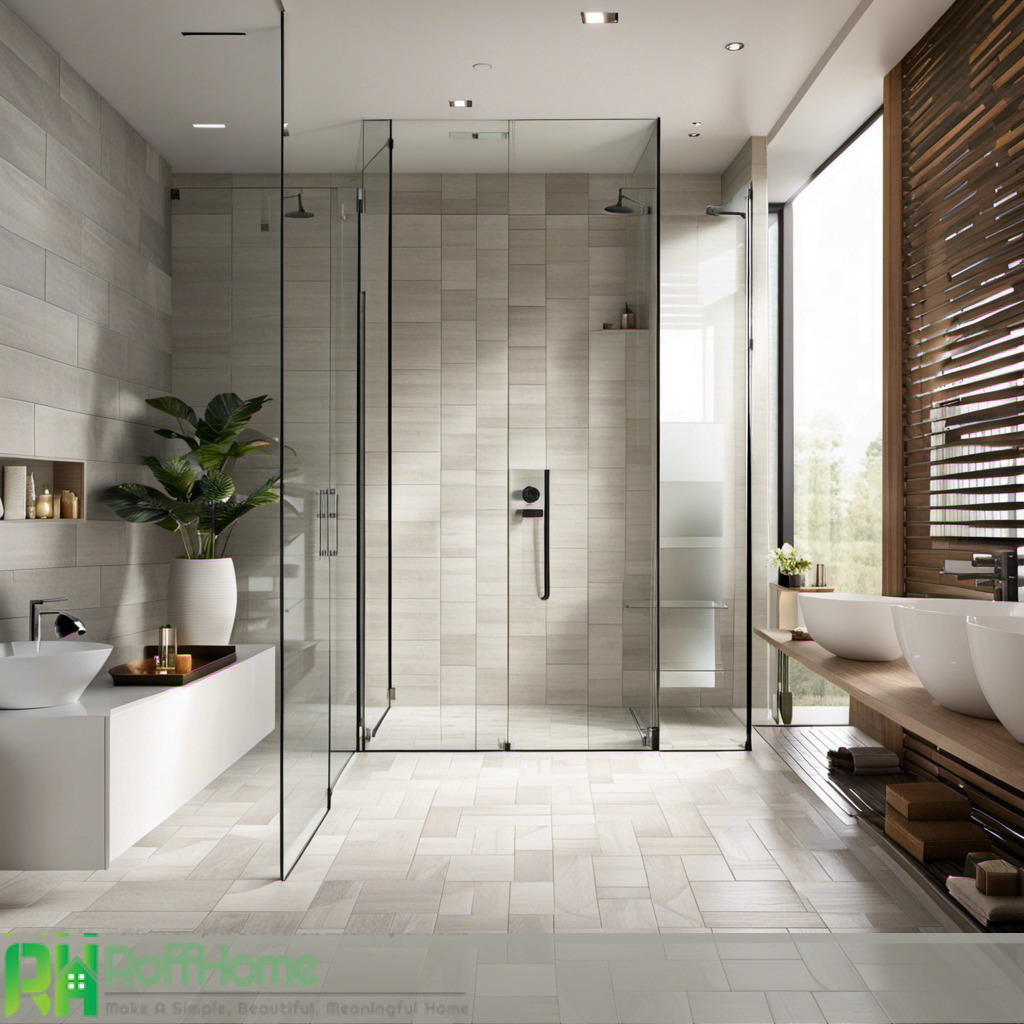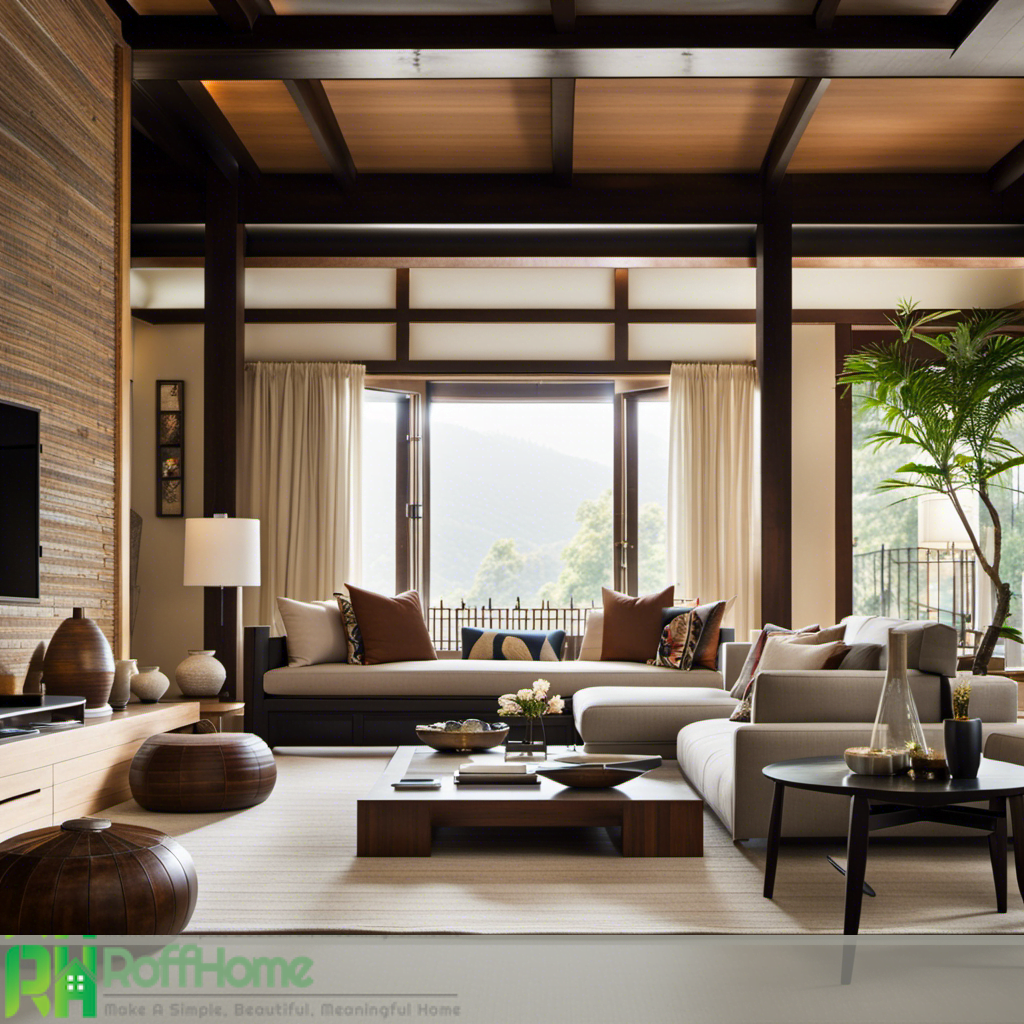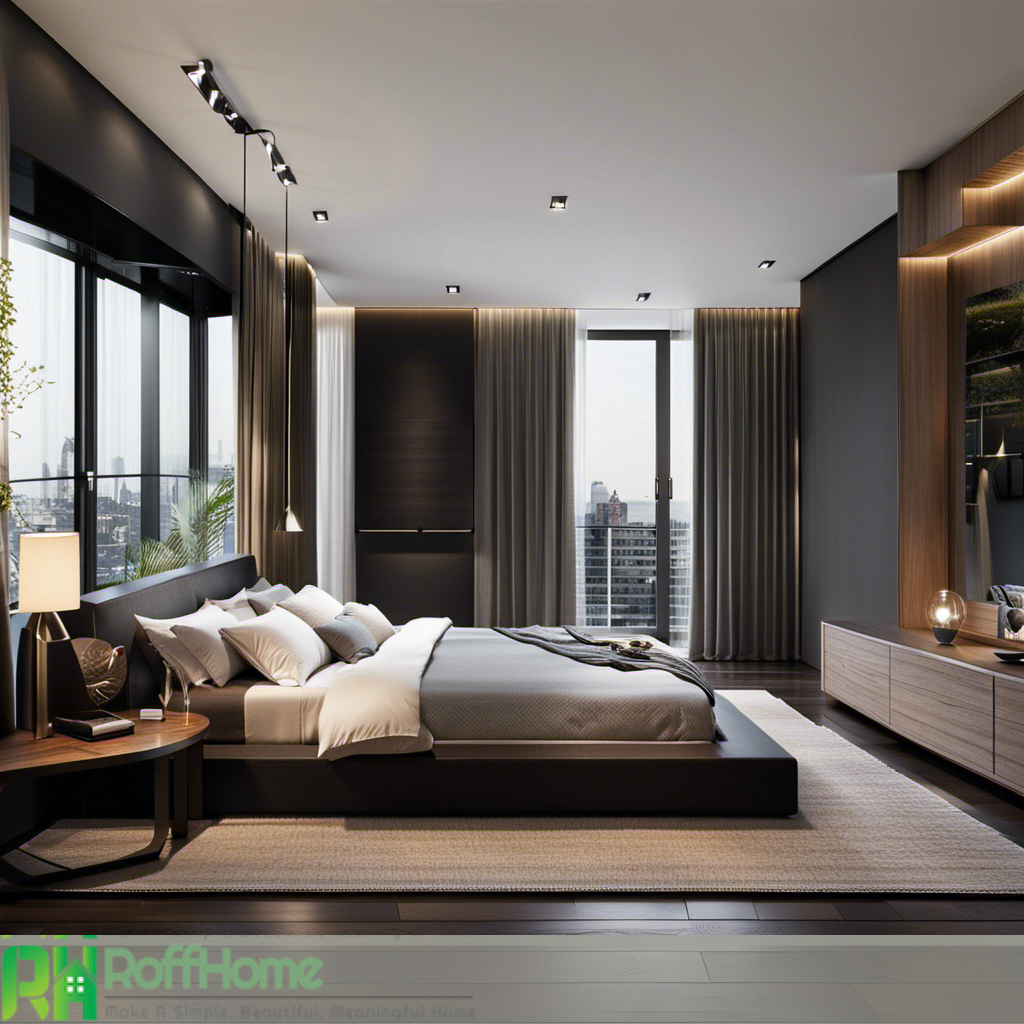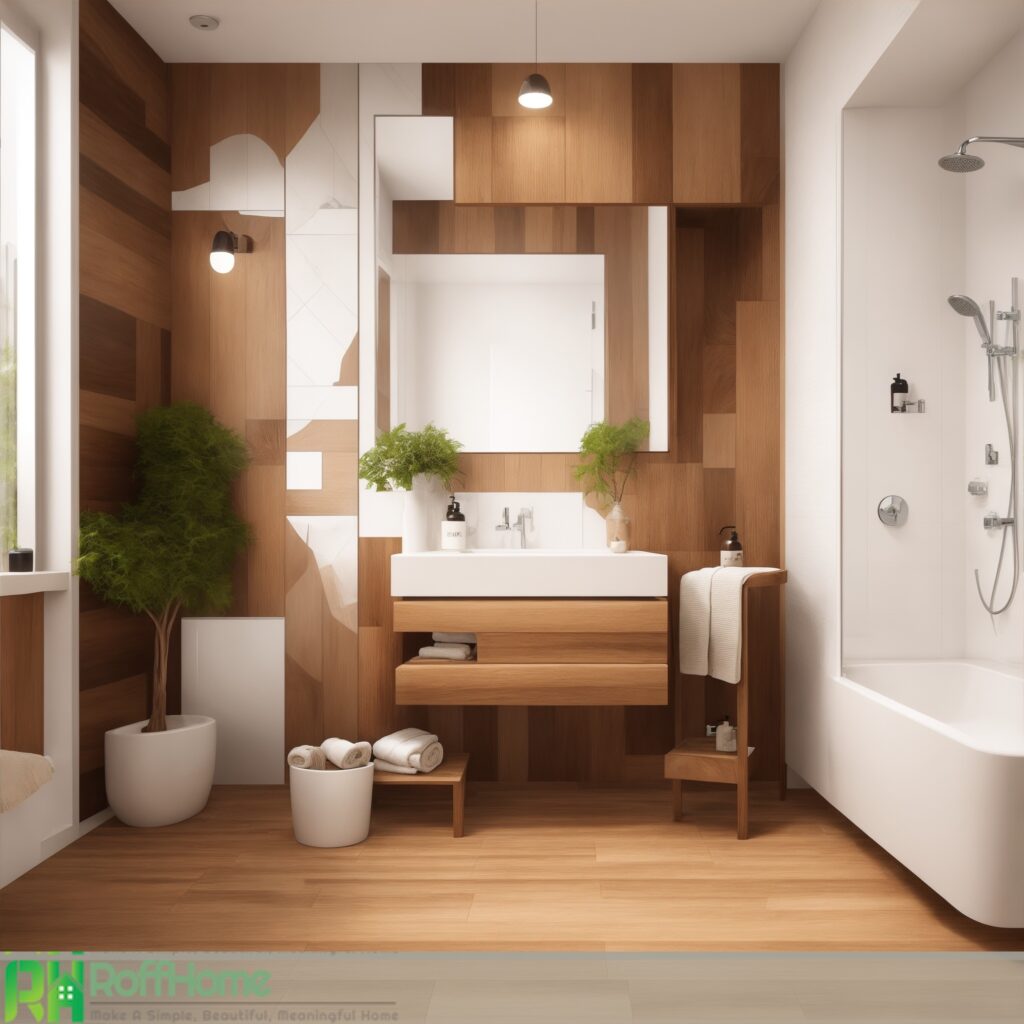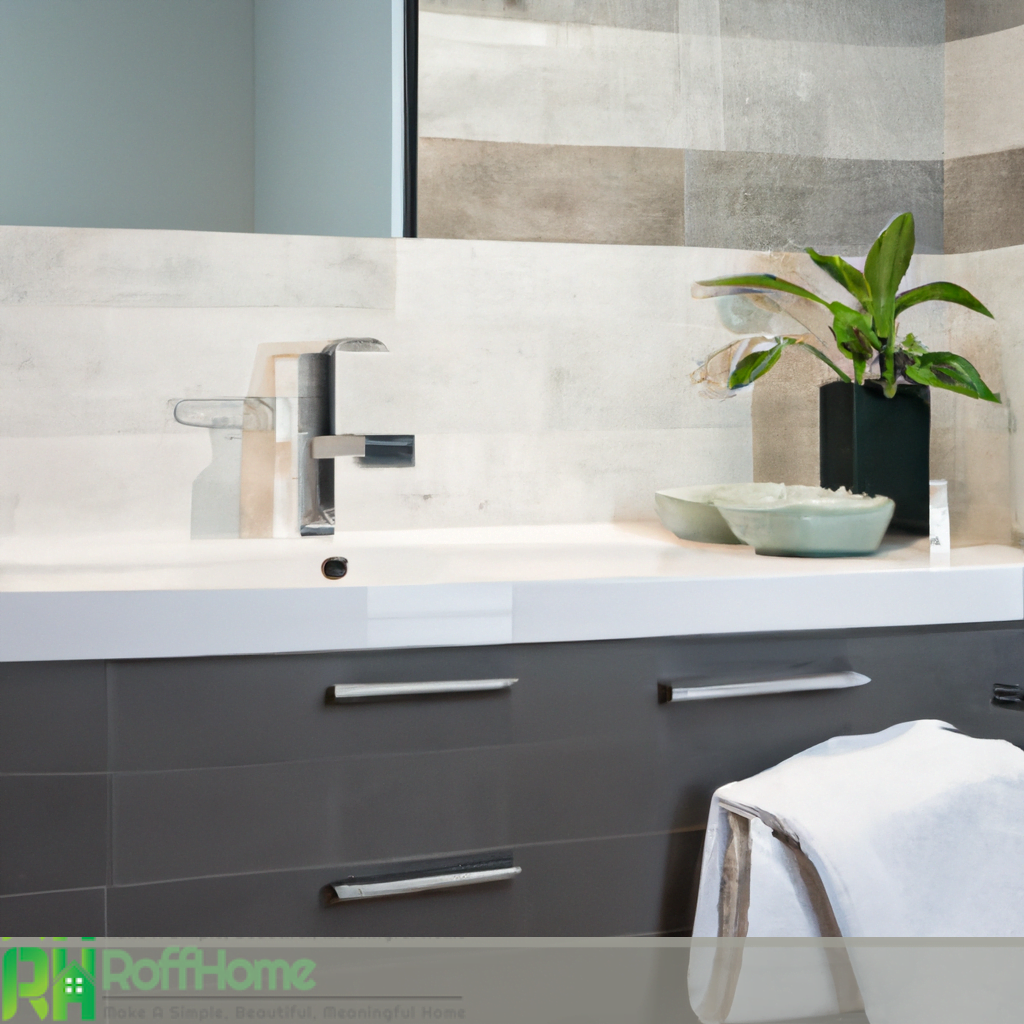Elevate Your Sanctuary: Master Bedroom Ceiling Ideas for a Breathtaking Retreat
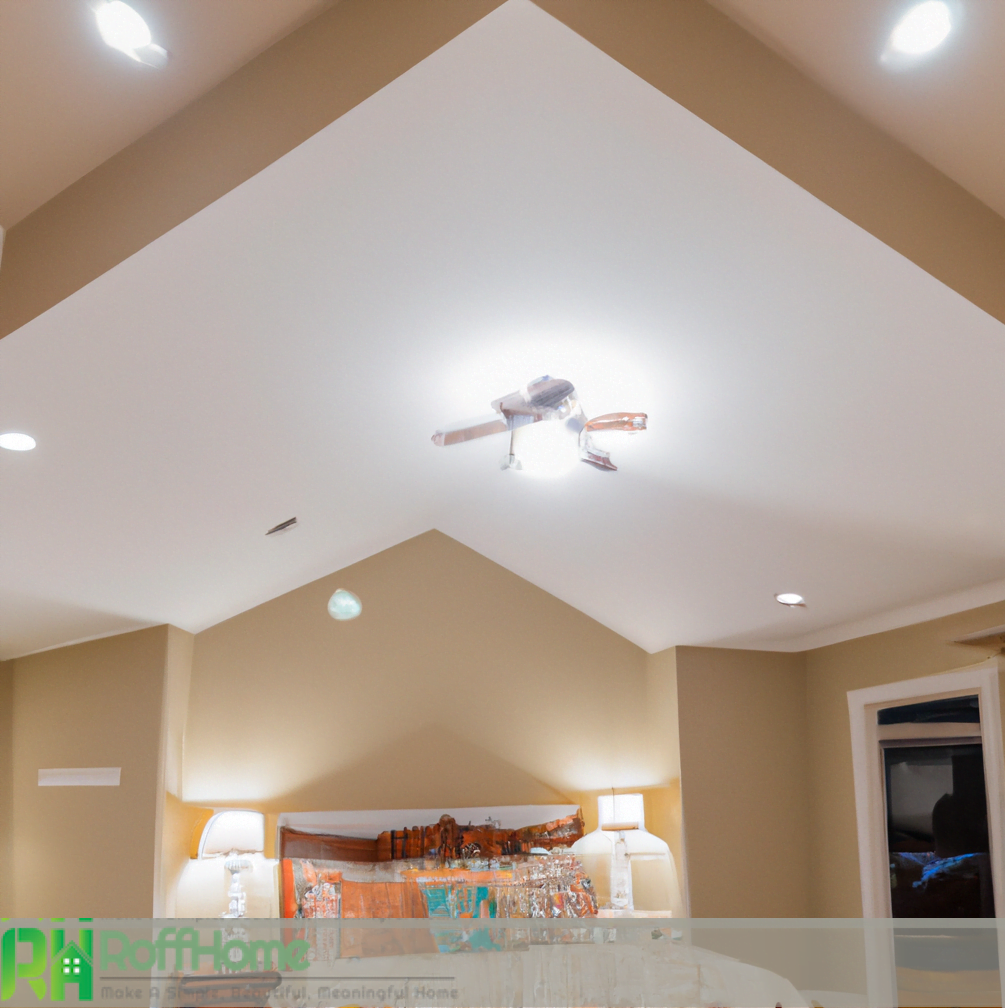
The master bedroom ceiling is a prominent feature that sets tone for the entire room. It is an integral part of master bedroom design, crucial in creating the desired ambiance and aesthetic appeal. From lighting fixtures to vaulted ceilings and skylights to tray ceilings, the master bedroom ceiling encompasses a range of elements that contribute to its overall beauty and functionality.
When designing the master bedroom ceiling, it is essential to consider the materials used, as they significantly impact the visual impact and feel of the space. Choosing materials, such as decorative ceiling tiles or traditional drywall, can enhance the interior design and complement the home decor.
The lighting fixtures installed in the master bedroom ceiling significantly influence the atmosphere of the room. Whether you opt for elegant chandeliers or subtle recessed lighting, the right institutions can transform the ambiance, creating a cozy and inviting environment.
Vaulted ceilings are a popular choice for master bedrooms, adding a sense of grandeur and spaciousness. Skylights bring in abundant natural light, creating a serene and airy atmosphere. With their recessed or elevated sections, tray ceilings add depth and architectural interest to the room.
During a renovation or bedroom makeover, the master bedroom ceiling becomes a focal point that draws attention upward. It serves as a canvas for expressing creativity and style, incorporating architectural elements that elevate the overall aesthetic.
Master Bedroom Ceiling Trends: What’s In and What’s Out
The master bedroom ceiling is no longer just a plain surface above our heads; it has evolved into a focal point and a design element that can elevate the entire space. Like any other design element, master bedroom ceiling trends come and go, reflecting homeowners’ ever-changing preferences and styles. This article will explore latest trends in master bedroom-ceiling design, highlighting what’s in and out of interior aesthetics.
One prominent trend gaining popularity is statement lighting fixtures on the master bedroom ceiling. Gone are the days of simple, flush-mount institutions. Instead, homeowners opt for elaborate chandeliers, pendant lights, or even sculptural pieces that make a bold statement. These eye-catching lighting fixtures provide functional illumination and serve as works of art, adding a touch of luxury and glamour to the space.
Another trend is incorporating architectural elements into the master bedroom ceiling. From coffered ceilings to exposed wooden beams, these details add depth, character, and a sense of craftsmanship to the room. They create visual interest and testify to the homeowner’s attention to detail.
In terms of materials, natural and organic elements are in vogue. Wood-paneled ceilings, for example, bring warmth and a sense of nature into the master bedroom. Reclaimed wood or tin ceilings add a rustic charm and create a cozy, cottage-like atmosphere.
Regarding color palettes, the trend is moving towards soft and neutral tones. Light shades like creams, whites, and pastels create a serene and calming environment, promoting relaxation and restfulness. In contrast, bold and vibrant colors on the ceiling are becoming less popular as they can overwhelm the space and create visual clutter.
The texture is also playing a significant role in master bedroom ceiling trends. Textured finishes, such as faux finishes, plaster techniques, or wallpaper, add dimension and visual interest to an otherwise flat surface. These textures can range from subtle patterns to intricate designs, allowing homeowners to customize their master bedroom ceilings to suit their style.
What’s out in the world of master bedroom ceiling design is conventional and mundane. Plain white ceilings with basic lighting fixtures are replaced with more innovative and visually striking options. Popcorn or textured ceilings are considered outdated and are being replaced with smoother finishes for a cleaner and more modern look.
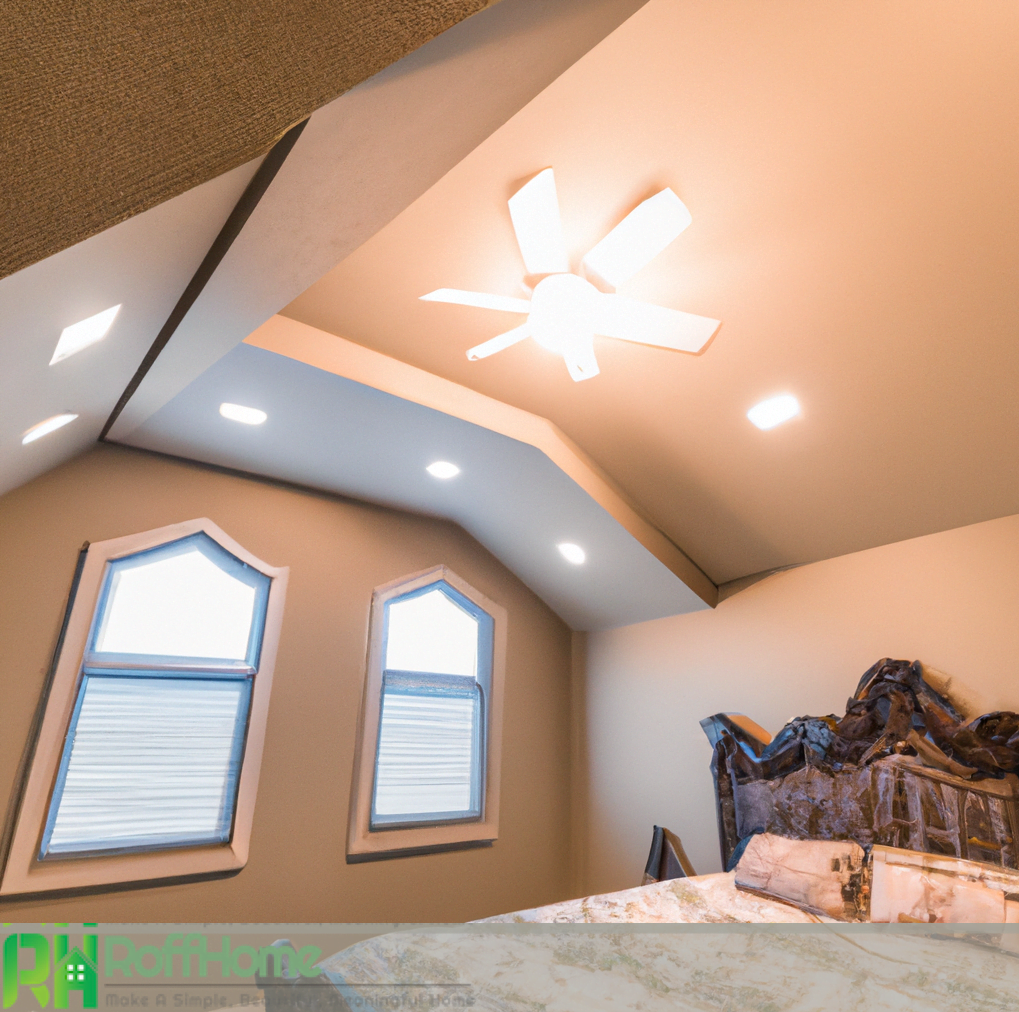
Design Trends: Master Bedroom Ceiling Ideas for Modern Homes
In modern homes, the master bedroom ceiling is crucial in creating a stylish and contemporary ambiance.we will explore the some of the top design trends and ideas for master bedroom ceilings in modern homes, helping you transform your sanctuary into a space reflects your taste and embraces the latest design aesthetics.
One popular trend in modern master bedroom ceilings is sleek and minimalistic designs. Clean lines, smooth surfaces, and a streamlined appearance contribute to a sense of sophistication and elegance. Recessed lighting fixtures seamlessly integrated into the ceiling create a seamless and uncluttered look while providing ample illumination.
Vaulted ceilings continue to be a sought-after choice for modern master bedrooms. These soaring ceilings create a sense of openness and grandeur, making the room more spacious and luxurious. To enhance the contemporary aesthetic, opting for a monochromatic color palette, such as shades of white or gray, can further accentuate the clean and modern appeal.
Another design trend for modern master bedroom ceilings is incorporating architectural details. Coffered ceilings with recessed panels add depth and visual interest, creating a sense of texture and dimension. Exposed beams made from wood or metal can lend an industrial or rustic charm to the space, adding character and warmth.
Skylights are famous for modern master bedroom ceilings as they flood the space with natural light, creating a bright and airy atmosphere. They enhance the visual appeal and offer energy-efficient solutions, reducing the reliance on artificial lighting during the day.
In terms of materials, modern master bedroom ceilings often feature sleek and glossy finishes. Glossy finishes, such as lacquer or high-gloss paint, reflect light and create a polished and contemporary look. Additionally, incorporating metallic accents or reflective surfaces can create a modern and glamorous aesthetic.
The texture is also a key consideration in modern master bedroom ceiling design. Textured wallpapers, geometric patterns, or 3D panels can add depth and visual intrigue, making a statement in the room. These textured elements can be combined with neutral color schemes to create a modern yet cozy atmosphere.
Creative Ideas for Master Bedroom Ceiling Designs
When it comes to the master bedroom design, the ceiling is often an overlooked canvas for creativity. Elevate your bedroom to new heights by exploring these creative ideas for master bedroom-ceiling designs. From unique textures to captivating lighting fixtures, these ideas will add a touch of elegance and originality to your sanctuary.
One creative idea is to incorporate a tray ceiling in your master bedroom. Tray ceilings feature recessed or elevated sections that add depth and architectural interest to the space. This design element can be further enhanced by incorporating accent lighting within the open areas, creating a soft and inviting ambiance.
Consider a dramatic wallpapered ceiling if you want to make a bold statement. Opt for a vibrant pattern or a metallic finish to bring visual intrigue and personality to the room. This unconventional approach adds a touch of luxury and sets your master bedroom apart from the ordinary.
For a touch of rustic charm, exposed wooden beams on the ceiling can create a cozy and inviting atmosphere. These beams can be stained or painted to match your desired aesthetic, whether farmhouse-inspired or modern rustic. Wood’s natural texture and warmth add a timeless appeal to the space.
An increasingly popular trend in the master bedroom ceiling design is decorative ceiling tiles. These tiles come in various patterns and materials, such as tin, PVC, or foam, and can the transform your ceiling into a work of art. Whether you prefer intricate designs or a more minimalist approach, decorative ceiling tiles provide endless possibilities for creative expression.
Skylights are another creative idea to consider for your master bedroom-ceiling. These windows in the roof allow natural light to flood the room, creating a serene and airy atmosphere. Not only do skylights provide abundant sunshine, but they also offer a view of the sky, bringing a sense of connection to the outdoors.
Incorporating unique lighting fixtures can instantly elevate the design of your master bedroom-ceiling. Consider installing a glamorous chandelier, pendant lights, or a constellation of twinkling LED lights for a dreamy and enchanting effect.
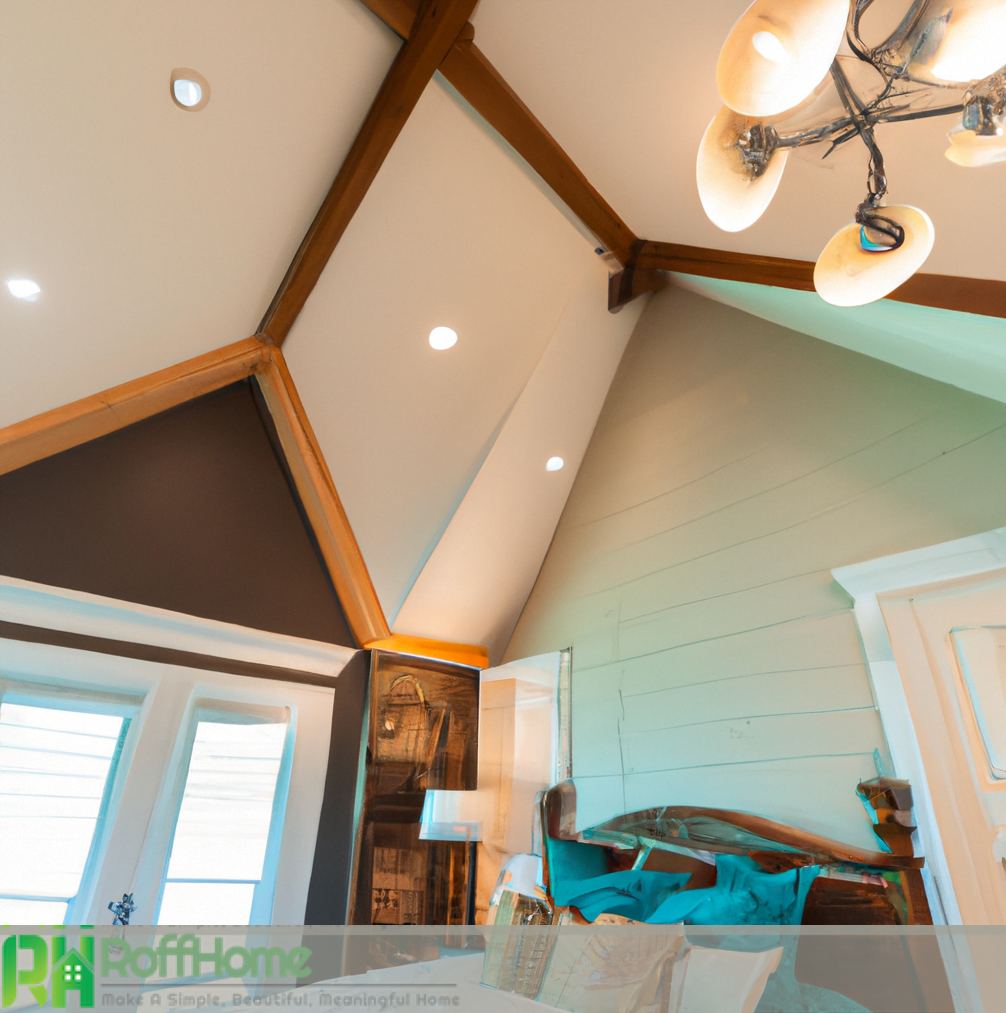
How to Choose the Perfect Ceiling Material for Master Bedroom
When designing a master bedroom, choosing the suitable ceiling material is crucial for creating the desired atmosphere and aesthetic appeal. The perfect ceiling material should complement the overall design and offer functionality and durability.
Firstly, consider the style and theme of your bedroom. Drywall is a popular and versatile option if you prefer a traditional or classic look. It provides a smooth and seamless finish that can be easily painted or textured to match your desired aesthetic. The other hand, if you’re going for a more rustic or natural vibe, wooden ceiling materials such as tongue and groove panels or reclaimed wood can add warmth and character to the space.
Next, consider the maintenance and durability of the ceiling material. Master bedrooms are meant to be relaxing spaces, and you wouldn’t want to spend excessive time and effort on maintenance. For example, if you’re looking for a low-maintenance option, consider PVC or vinyl moisture-resistant panels that can be easily wiped clean.
Another essential factor to consider is acoustics. They are choosing ceiling materials that offer good sound insulation if you want to create a quiet and peaceful environment. Suspended ceilings or acoustic panels can help reduce noise transmission and create a more serene atmosphere in your master bedroom.
Lighting is another crucial aspect to keep in mind. Different ceiling materials interact with light in unique ways. If you want to enhance brightness in your master bedroom, consider materials with reflective properties, such as glossy finishes or metallic surfaces.
Lastly, consider your budget. Ceiling materials vary in cost, and choosing a material that fits within your the budget without compromising on quality and aesthetics is essential. Consider the size of your master bedroom and calculate the total cost of materials and installation.
The Importance of Designing a Stunning Master Bedroom Ceiling
When designing a master bedroom, the ceiling often plays a crucial role in creating a stunning and captivating space. While attention is usually focused on the furniture, color scheme, and décor, the ceiling should not be overlooked. Here are some key reasons why designing a stunning master bedroom-ceiling is essential.
First and foremost, the master bedroom-ceiling serves as a visual focal point. When someone enters the space, their gaze naturally rises to take in the entire room. A beautifully designed top immediately captures attention and sets the tone for the overall ambiance. Depending on the chosen design elements, it can add a touch of luxury, elegance, or even whimsy.
Furthermore, a well-designed master bedroom-ceiling can contribute to the overall aesthetic harmony of the room. It ties together all the elements, such as the flooring, walls, and furniture, creating a cohesive and visually pleasing space. Whether you opt for a tray ceiling, exposed beams, decorative tiles, or a unique lighting fixture, the ceiling design should complement and enhance the overall style and theme of the room.
A well-designed top can create an illusion of spaciousness, making the room feel larger and more open. Vaulted ceilings, for example, add height and grandeur, while light-colored or reflective finishes can make the space feel brighter and more expansive.
The lighting fixtures incorporated into the roof can create different lighting effects, from soft and romantic to bright and energizing. Whether it’s recessed lighting, a statement chandelier, or strategic placement of accent lights.
Lastly, a stunning master bedroom-ceiling adds a layer of personal expression and creativity to the room. It lets homeowners showcase their style and taste, creating a unique and personalized space. It provides an opportunity for architectural details, textures, patterns, and colors to make a statement and reflect the homeowner’s personality.
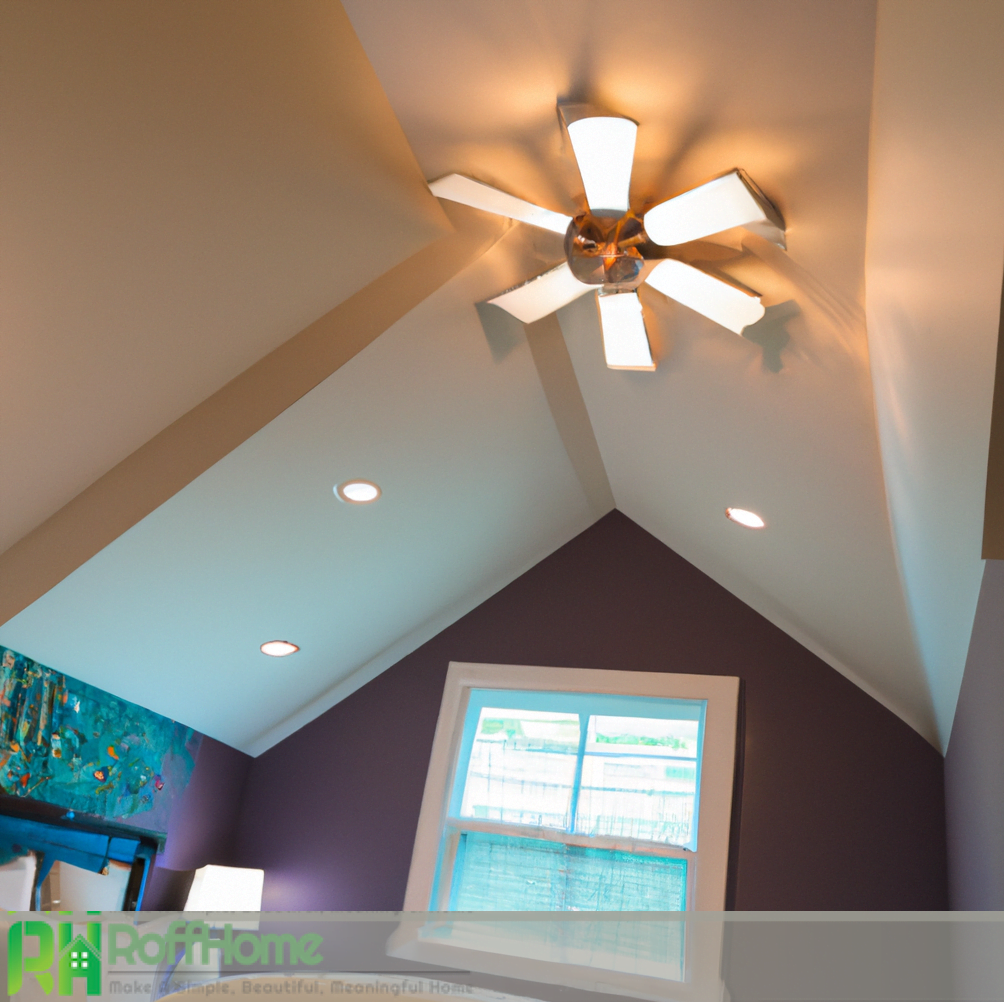
How to Install a Master Bedroom Ceiling
Installing a master bedroom ceiling is a significant undertaking that requires careful planning and execution. Whether you’re looking to the replace an existing roof or create a new one, here are some critical steps to guide you through installation.
Plan and Prepare:
- Start by assessing the structural integrity of the existing ceiling and determining if any repairs or reinforcements are necessary.
- Measure the dimensions of the room to determine the amount of materials needed.
- Consider factors such as lighting fixtures, ventilation, and insulation requirements.
- Create a detailed plan that outlines the design, materials, and installation steps.
Gather Materials and Tools: Purchase all the necessary materials based on your design and budget. This may include ceiling panels, drywall, nails or screws, insulation, lighting fixtures, and decorative elements. Gather the required tools, such as a ladder, tape measure, saw, drill, screwdriver, level, and safety equipment.
Remove Existing Ceiling (if applicable): If replacing an existing ceiling, carefully remove the old materials, including drywall, plaster, or tiles. Be cautious of electrical wiring or plumbing hidden behind the top.
Install Structural Support: Ensure that the structural support for the ceiling is in place. This may involve adding additional beams or joists to support weight of the new ceiling materials. Consult with a professional if needed.
Install Insulation and Wiring: If desired, install insulation for soundproofing and energy efficiency. Additionally, run any electrical wiring for lighting fixtures or other electrical components.
Install Ceiling Materials: Depending on your chosen ceiling material, follow the manufacturer’s instructions for installation. This may involve installing drywall, ceiling panels, or other decorative elements. Ensure the materials are level and securely fastened to the structural support.
Apply Finishing Touches: Once the central ceiling installation is complete, apply any necessary finishing touches. This may include sanding, priming, painting the ceiling, or adding decorative elements such as crown molding or trim.
Install Lighting Fixtures: Install the desired lighting fixtures, following electrical safety guidelines and consulting an electrician if necessary. Consider the placement and type of lighting to achieve the desired ambiance in your master bedroom.
Clean and Inspect: Clean up any debris or dust from the installation process and inspect the ceiling for any imperfections or areas that require additional attention.
Enjoy Your New Master Bedroom Ceiling: With the installation complete, step back and admire your newly installed master bedroom ceiling. Personalize the space with furniture, decor, and accessories to create your ideal sanctuary.
The Impact of Lighting on Master Bedroom Ceilings
Lighting plays a crucial role in setting any space’s mood, ambiance, and functionality, and the master bedroom is no exception. When it comes to master bedroom-ceilings, the impact of lighting is particularly significant. Here are some key aspects to consider regarding the effect of illumination on master bedroom-ceilings.
First and foremost, lighting fixtures integrated into the master bedroom-ceiling have the power to create a focal point attention to the room’s architectural features. Whether it’s a stunning chandelier, recessed lighting, or a series of pendant lights, the choice of lighting fixture can become a captivating centerpiece, enhancing the overall design and aesthetic appeal of the space.
Furthermore, lighting on the master bedroom-ceiling is vital in establishing the desired atmosphere and mood. Different lighting options provide various effects, allowing you to customize the ambiance based on your preferences. Soft, dimmable lights can create a cozy and relaxing atmosphere, perfect for winding down at the end of the day. Alternatively, bright and vibrant lights can energize the space and promote productivity and alertness.
In addition to setting the mood, lighting on the master bedroom ceiling serves a functional purpose. Task lightings, such as adjustable spotlights or reading lights, can be strategically placed to provide focused illumination for activities like reading, getting dressed, or applying makeup. This targeted lighting ensures practicality and convenience in your daily routines.
Natural light is also a crucial consideration when designing the lighting scheme for a master bedroom-ceiling. Skylights or large windows in the roof allow ample natural light to flood the room, creating a connection to the outdoors and providing a sense of spaciousness and tranquility. Natural light positively impacts mood and well-being, making it an essential element to consider.
Another significant impact of lighting on master bedroom-ceilings is its ability to enhance other design elements. Well-placed lighting fixtures can accentuate architectural details, highlight textures, and create depth and visual interest. For example, recessed lighting can emphasize a tray ceiling or illuminate decorative ceiling tiles.
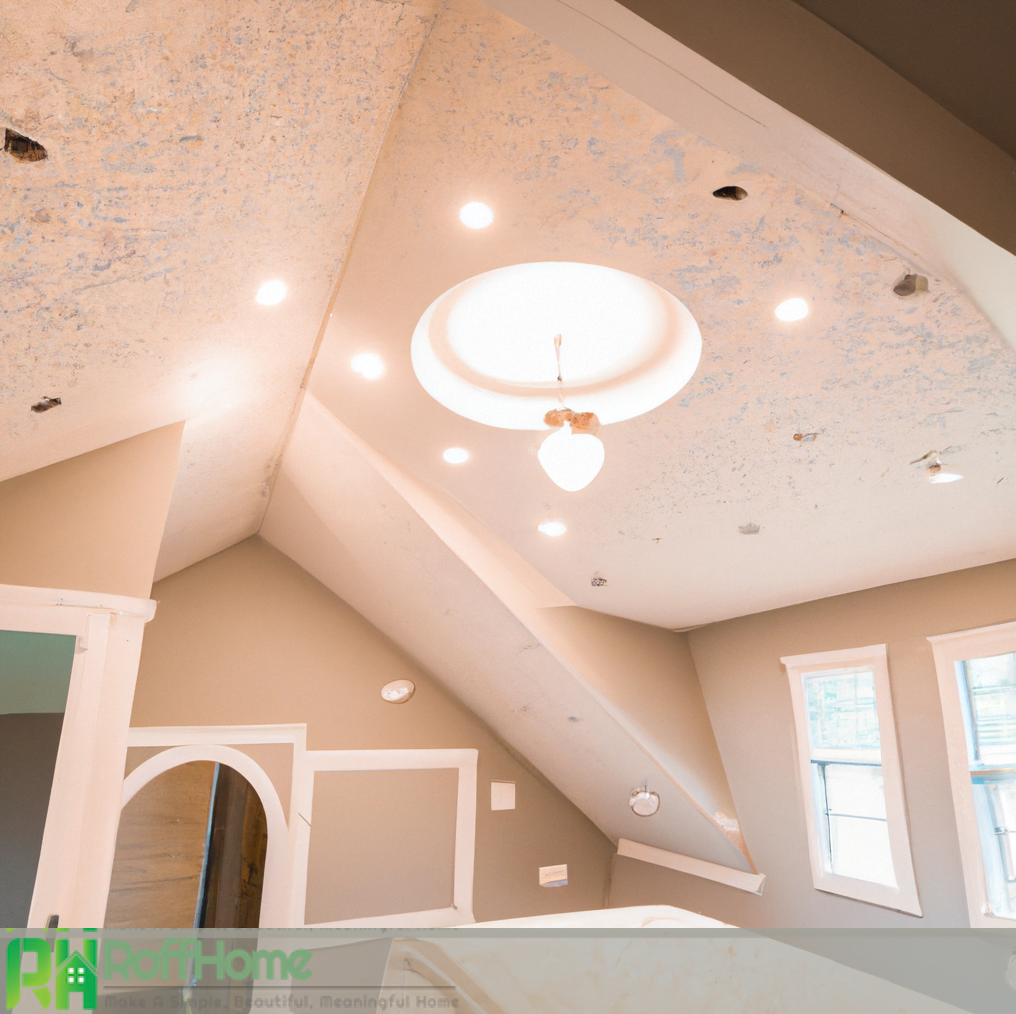
Pros and cons of choosing ceilings in master bedrooms
The choice of ceiling design and materials in a master bedroom can significantly impact the overall aesthetic and functionality of the space. While several options are available, each comes with its own pros and cons. Let’s explore the advantages and disadvantages of choosing different types of ceilings for master bedrooms.
Tray Ceilings
Pros: Tray ceilings add depth and architectural interest to the room. They create a sense of the luxury and elegance, making the master bedroom more spacious and visually appealing. Tray ceilings also offer the opportunity to incorporate accent lighting, enhancing the ambiance and creating a cozy atmosphere.
Cons: Installing a tray ceiling can be more complex and costly than other options. It requires skilled labor and may involve structural modifications. Additionally, the intricate design of a tray ceiling may limit options for hanging artwork or installing ceiling fans.
Vaulted Ceilings
Pros: Vaulted ceilings create an open and airy feel, making the master bedroom appear larger and more grandiose. They allow more the natural light to enter the room, enhancing brightness and creating a sense of expansiveness. Vaulted ceilings also will enable the incorporation of unique design elements, such as exposed beams or skylights.
Cons: The construction and maintenance of vaulted ceilings can be challenging. The roof’s steep slope may make it difficult to reach for cleaning or maintenance purposes. Additionally, heating and cooling the room may require more energy due to the increased air volume.
Exposed Beam Ceilings
Pros: Exposed beam ceilings add a charming rustic element to the master bedroom. They create a cozy and warm ambiance, particularly with wooden materials. Exposed beams can be a focal point of the room, showcasing the natural beauty and architectural character.
Cons: Installing exposed beam ceilings can be labor-intensive and may require professional assistance. The beams can reduce ceiling height, making the room feel slightly smaller. Additionally, dust and debris can accumulate on the rays, requiring regular cleaning and maintenance.
Suspended Ceilings
Pros: Suspended ceilings, or drop ceilings, offer versatility and practicality. They provide easy access to electrical wiring, plumbing, or ventilation systems hidden above the roof. Suspended ceilings also provide excellent sound insulation and can improve acoustics in the master bedroom.
Cons: Suspended ceilings may offer a different aesthetic appeal than other options. They can give a more industrial or commercial look to the space. Additionally, the installation process may require professional assistance and can be time-consuming.
In conclusion, the master bedroom ceiling is crucial in creating a stunning and functional space. Whether it’s through design choices, lighting fixtures, or material selection, a well-designed top can enhance the overall aesthetic appeal, mood, and ambiance of the master bedroom.

